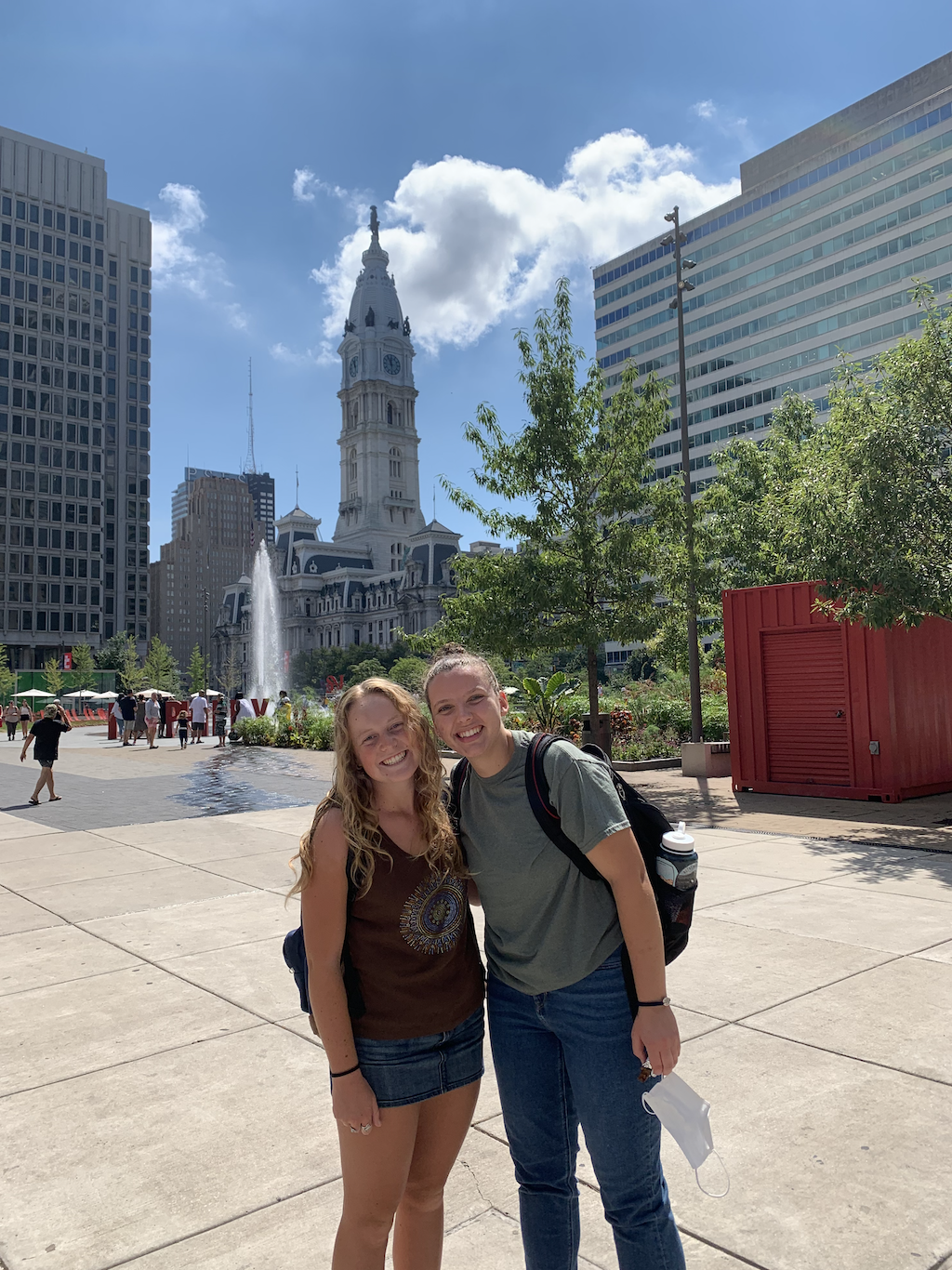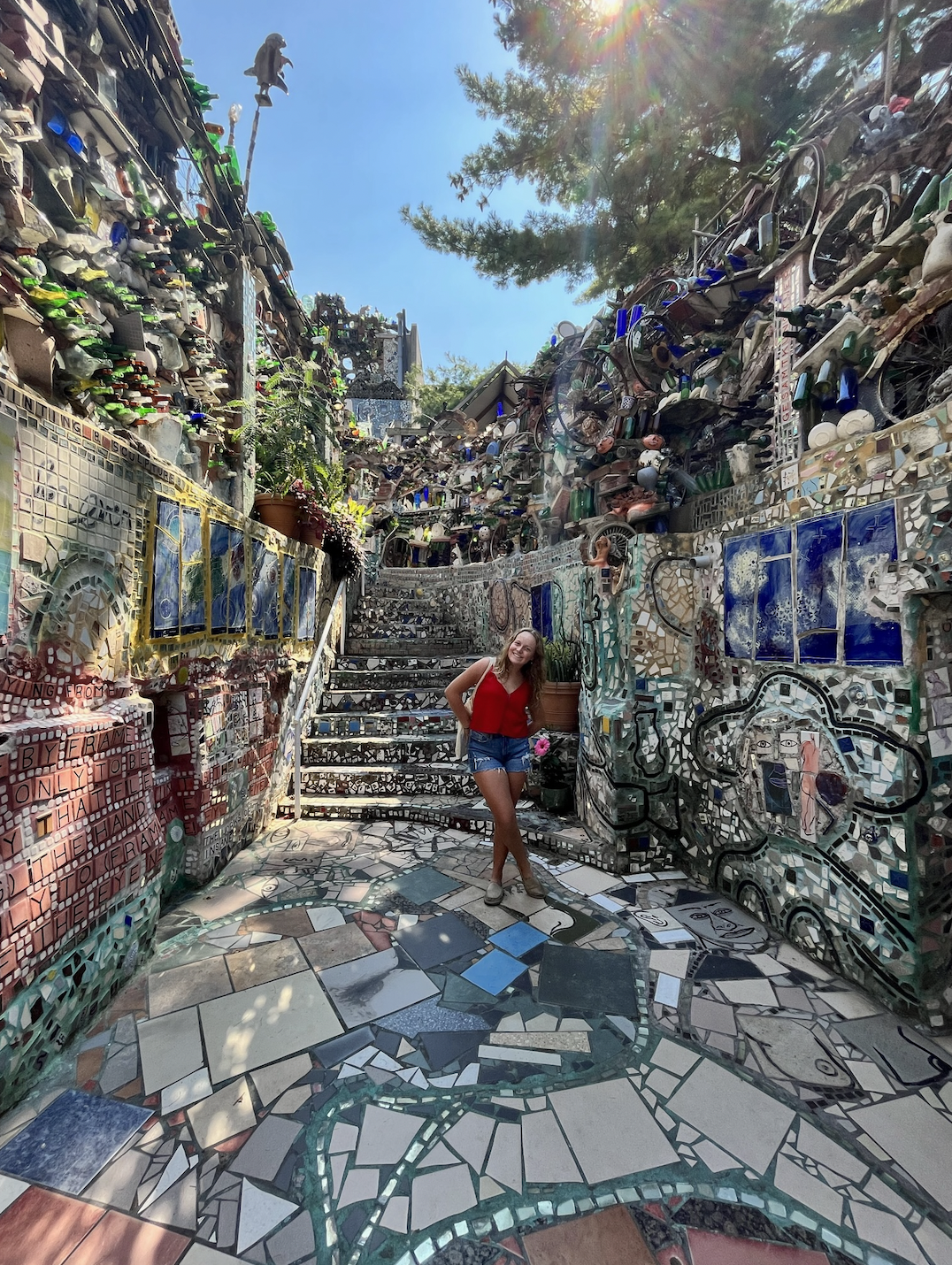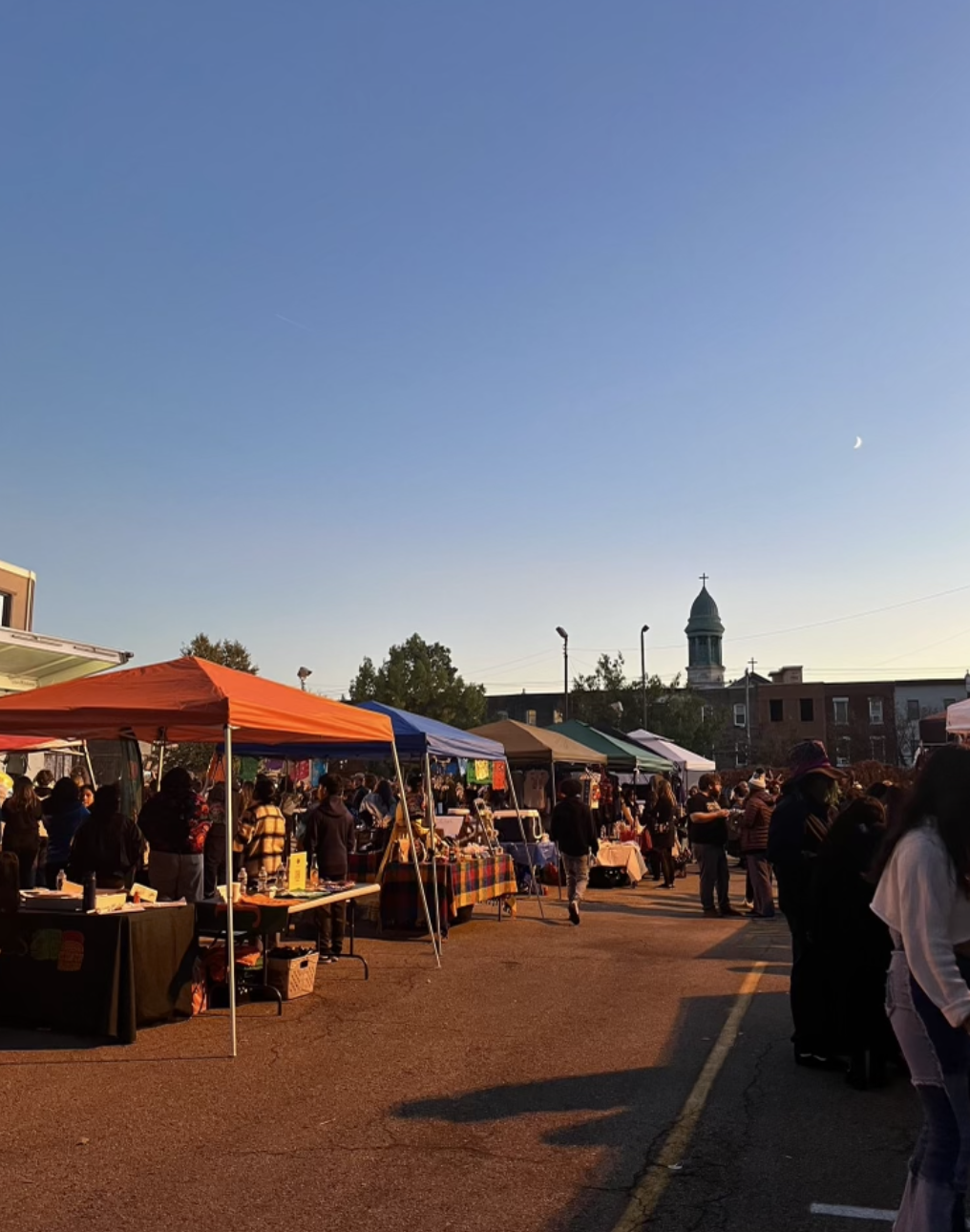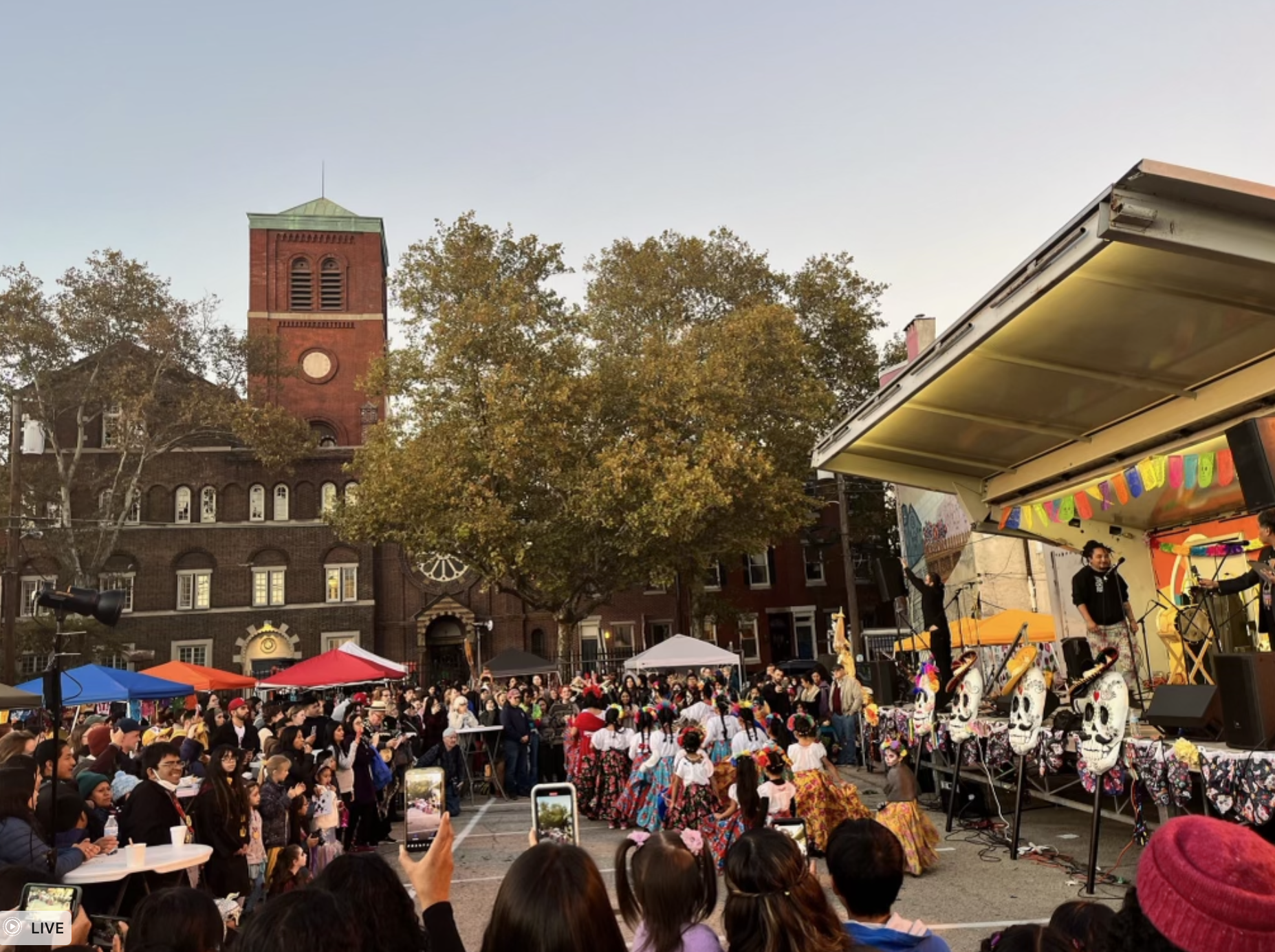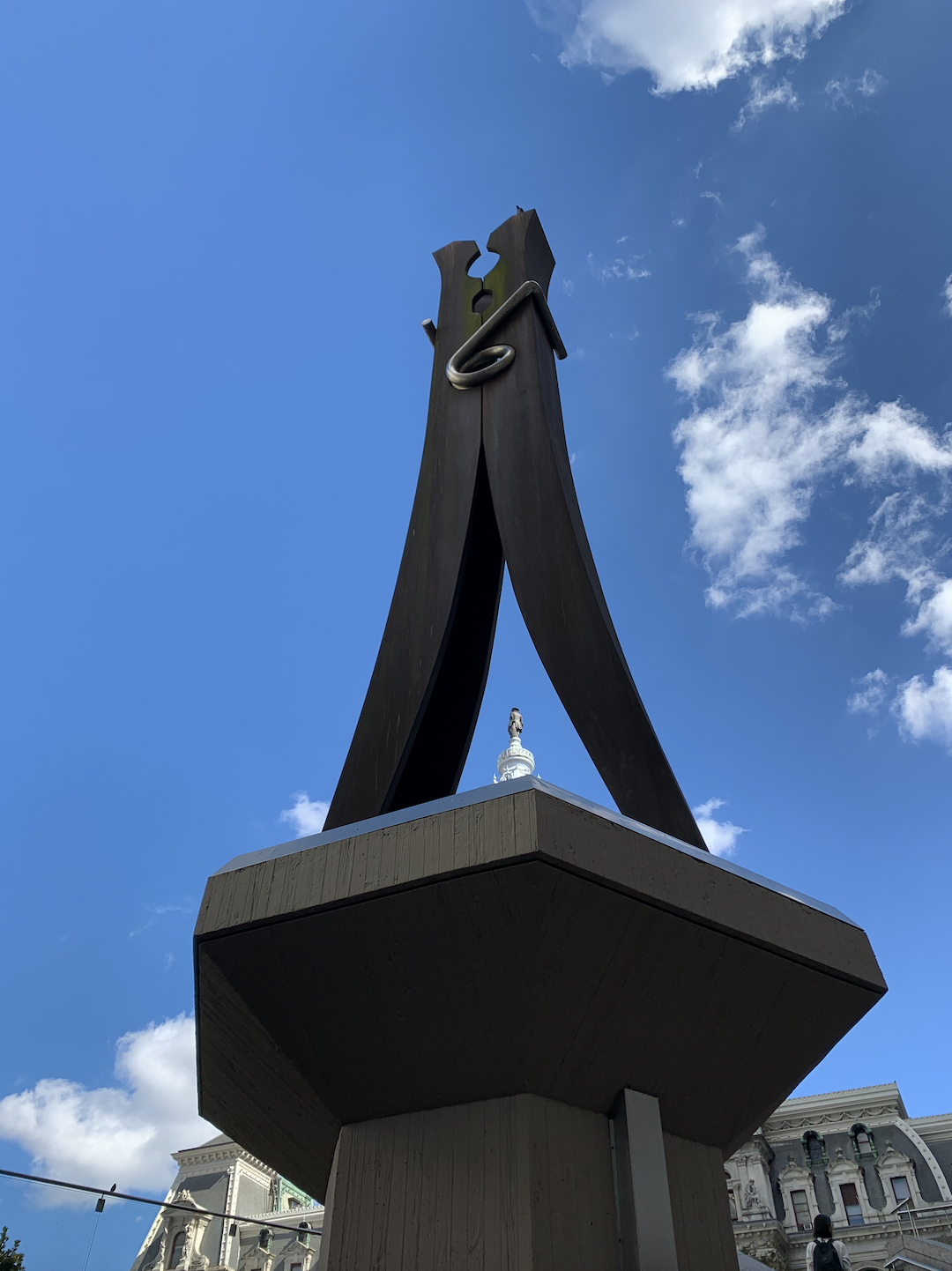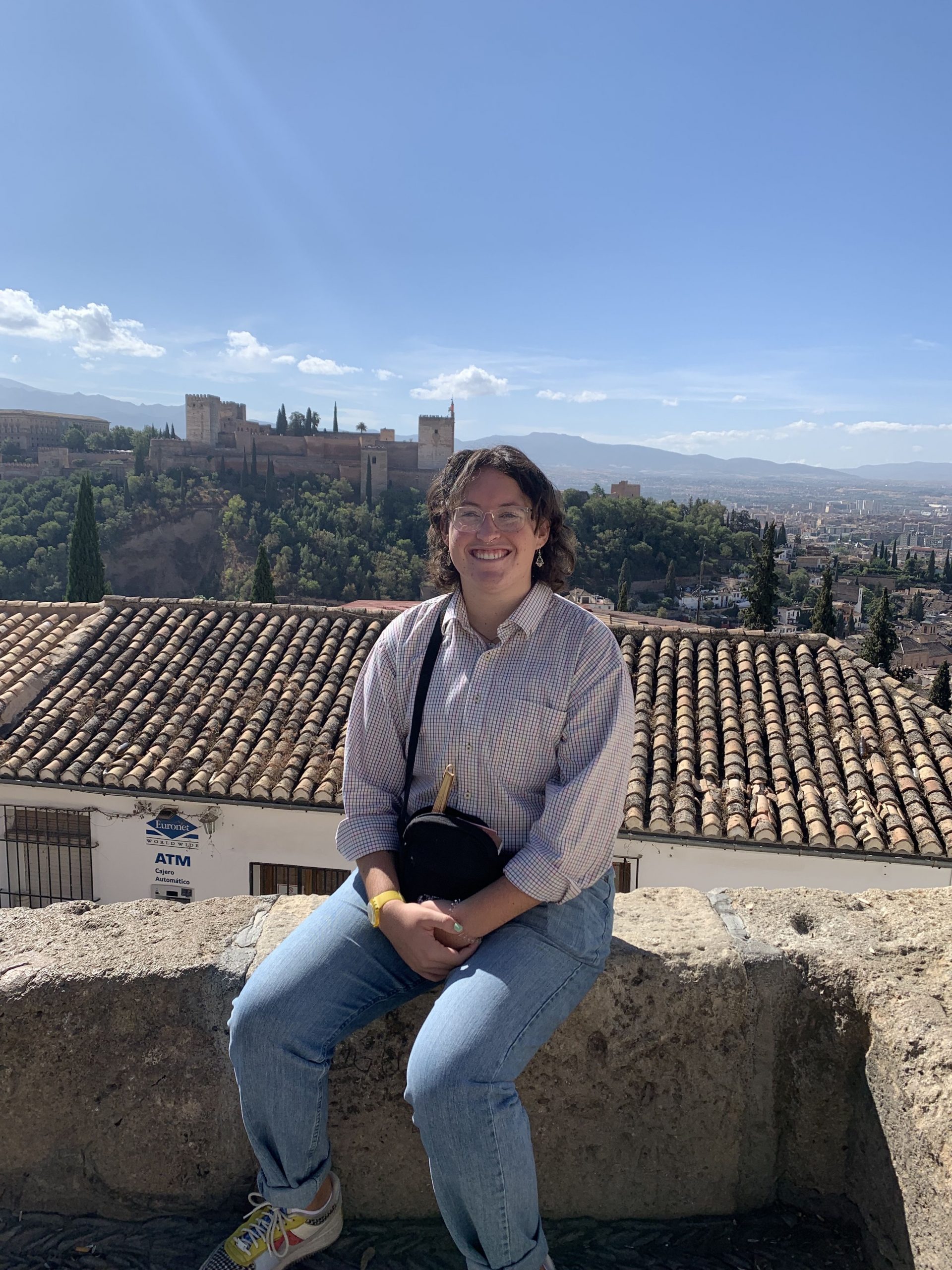
Me sitting at the Mirador de San Nicolas, with a view of the Alhambra on the hill and the city of Granada below.
Hello readers!
My name is AJ Rose Wallihan, and I am a junior Spanish & History of Art double-major here at Bryn Mawr College. I am back on campus after a fall semester abroad in Granada, a city in the south of Spain rich with culture and history.
Bryn Mawr has over fifty approved study abroad programs, and choosing between them can seem daunting. Luckily, I had some pretty specific goals in mind. First, I wanted a program with art history courses, which can be difficult to find. And second, I wanted language immersion since improving my Spanish is a huge part of what I wanted to get out of the study abroad experience.
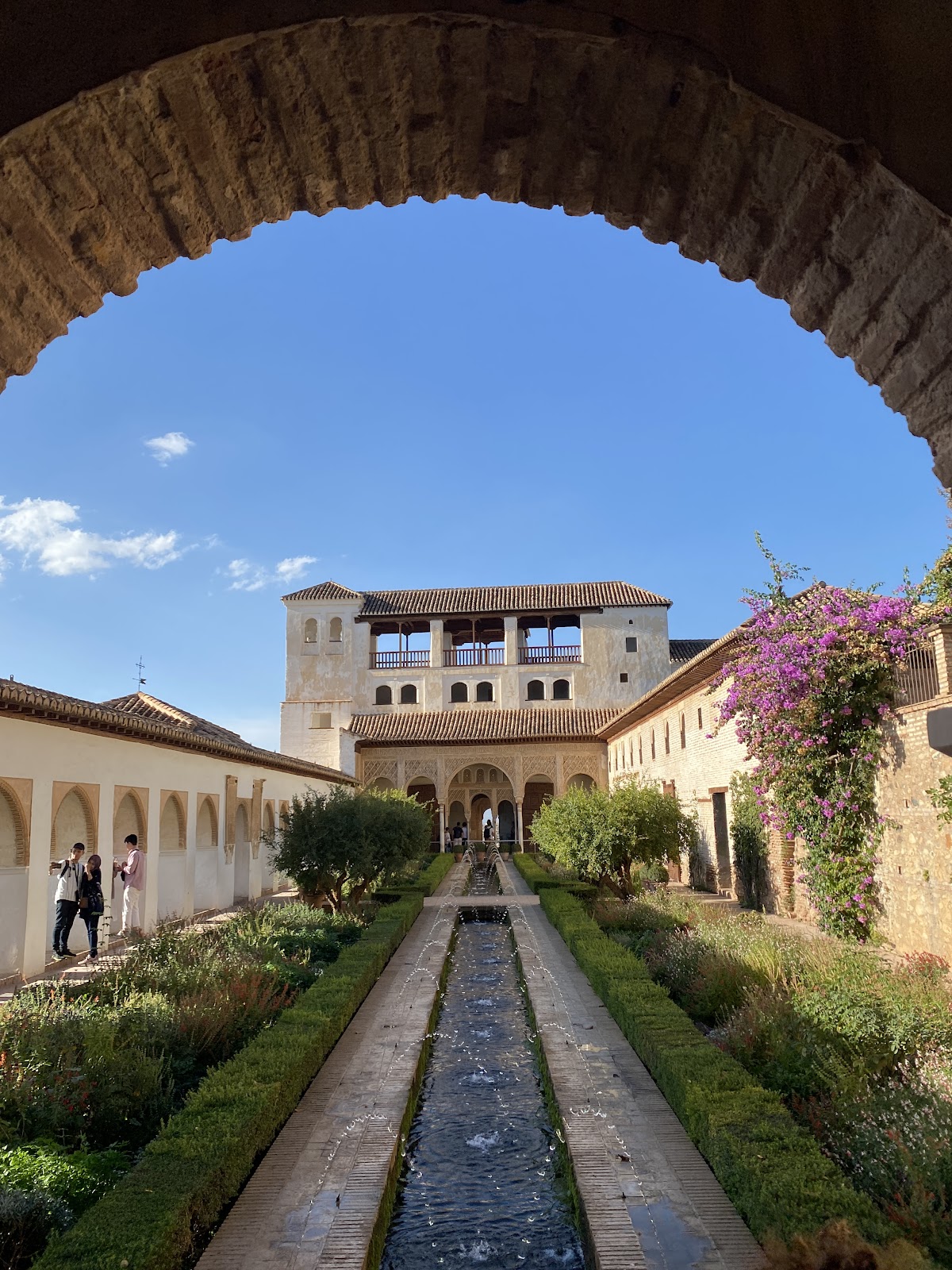
A garden from Generalife, in the Alhambra — gorgeous, serene, and a wonderful place to have class on an autumn afternoon.
And immerse in the language I did! Many study abroad programs for Americans don’t take place at a foreign university, but have a series of classes taught by local professors and experts geared towards American students. My program allowed us to choose classes at the Universidad de Granada, an opportunity I am so glad I took advantage of. The prehistoric art lecture I took was very different from what I was used to, but taking a class not aimed at second-language Spanish learners was a great way to practice jumping into the deep end of immersion and learning how to swim… or to ask for help, as my professors and advisors abroad became invaluable resources.
I also got a lot of more casual language practice: eating at restaurants, taking public transportation, even going to the doctor’s office when I caught a cold! After a certain point of learning a second language, it can be hard to realize that you are improving, but it’s a lot easier to notice when you become more confident. I generally consider myself a confident person, but by the end of my semester, I was happily initiating long conversations entirely in Spanish that, just a few months ago, I would have chickened out of ten words in.
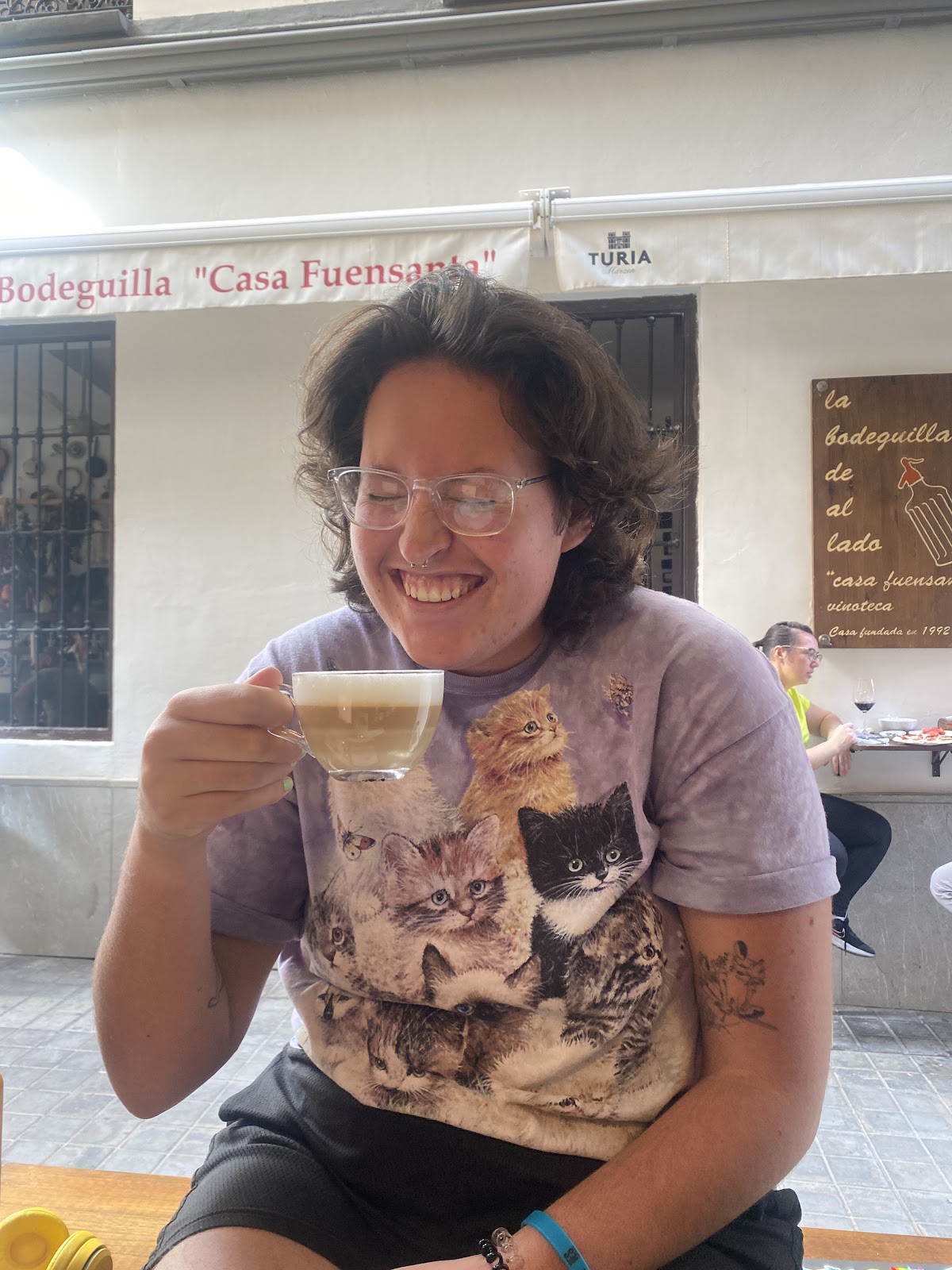
Enjoying a café con leche, one of the many I had that semester.
Language learning wasn’t the only draw, though — Granada’s art history also runs deeply through the city. Easily the city’s most famous feature is the Alhambra, a monument on top of a hill just across the Rio Darro. Once a fortified citadel with military holdings and regal palaces, this hilltop landmark is a stunning visual reminder of the region’s Islamic heritage, which lasted in various forms from the 9th century until the massive expulsion of Muslims and Jews in 1492. It is visible from a large portion of the city, including the building where I had most of my classes, and I was able to tour its many buildings several times, seeing and learning something new with each visit. The visits were so impactful, I got a tattoo of the design on one of the tiled garden walls of the Islamic palaces to commemorate my time there.
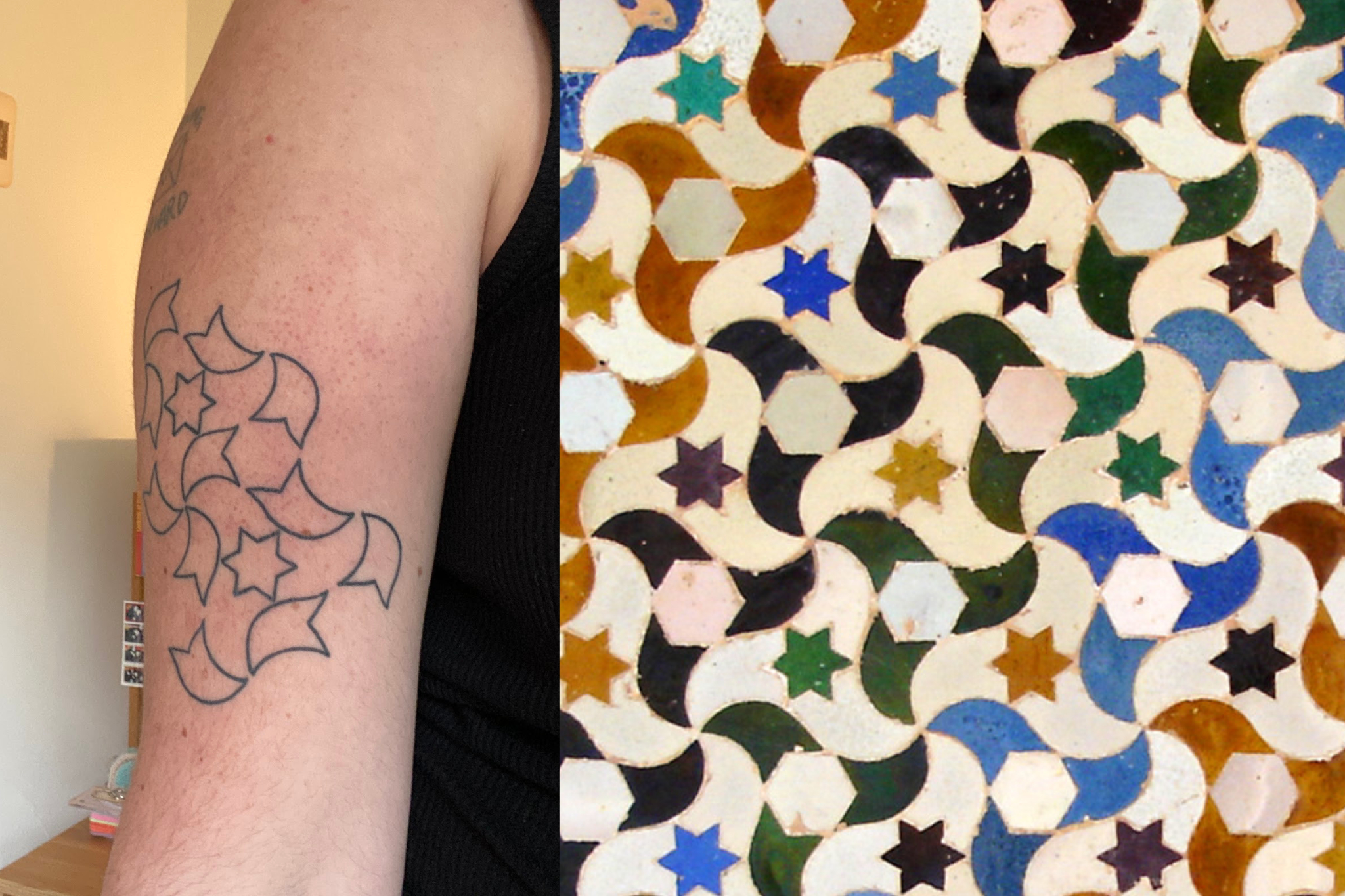
My tattoo, and the tiles that inspired it.
The history of the city runs far deeper than the hilltop Alhambra, though. Albaicín is the historic Muslim neighborhood, and the neighborhood of Realejo was once home to a thriving Jewish community. There are mosques repurposed to be churches, convenience stores just across the street from centuries-old cathedrals, signs on lots between bakeries and fruterías marking them as architecturally and archaeologically significant. It can be so easy to take for granted how new American architecture is, but nothing compares to walking through a city built across what is so visibly almost a thousand years of growth and development on my way to class every day.
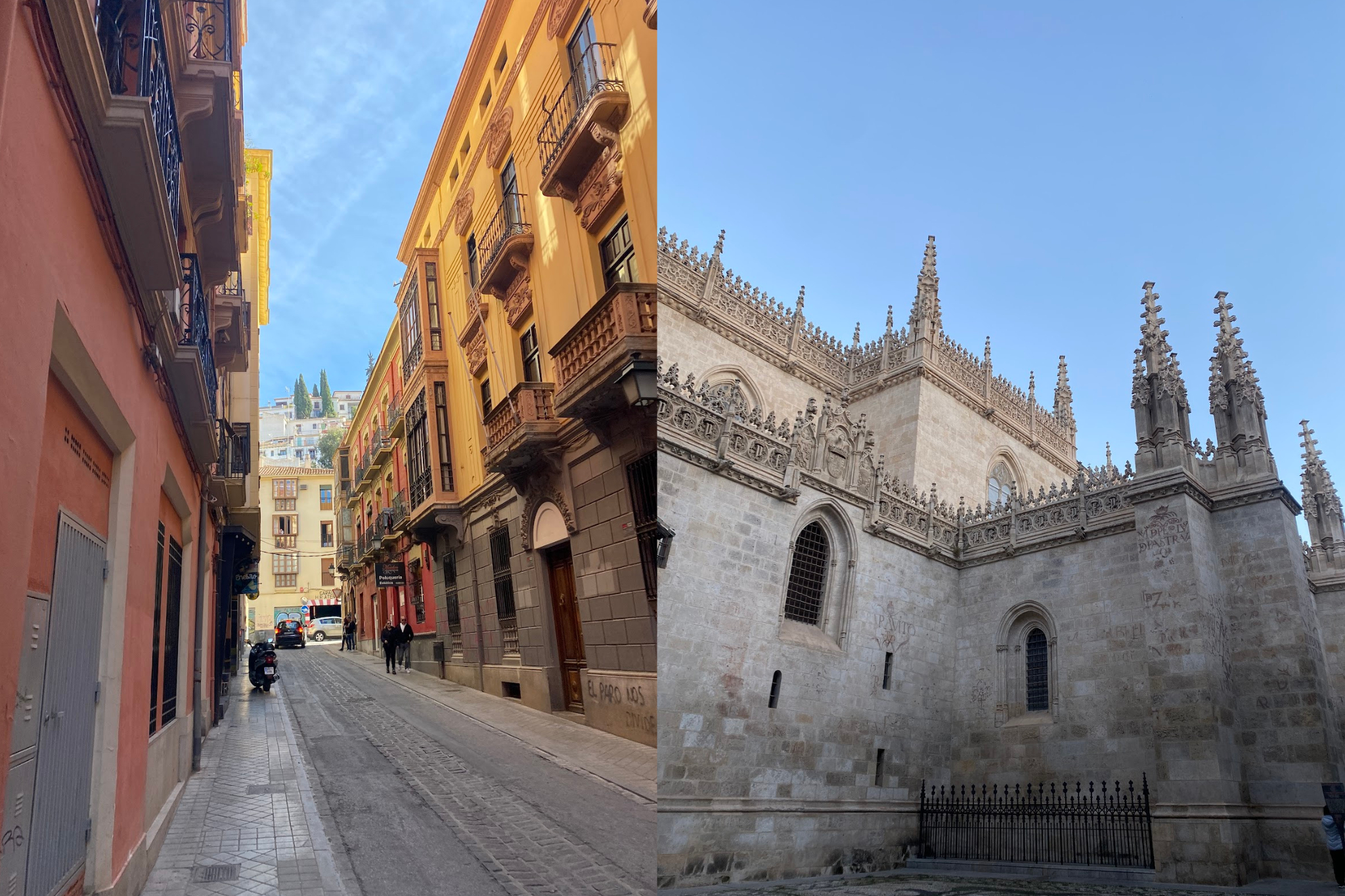
Pictures along the walk from my residencia to class… always 15 minutes well spent!
It wasn’t just the winding streets of Granada that made me feel like a part of something larger; it was the access to travel. I did a weekend trip with a friend to Florence, Italy; Quinn talked about studying abroad there in this blog post. I didn’t have to do much more, though, because part of our program was a series of weekend trips — the beach of Cabo de Gata, the villages of Ronda and Setenil, the cities of Córdoba and Sevilla. We also had a five-day trip to Morocco, which was absolutely fantastic. Getting to experience another vastly different culture, with all of the people and landscape and food and art it had to offer, really helped me put my time in Spain into a broader global perspective. When we got back to Granada, I realized how much I had learned about this city, and it was cool to realize when I came back that it felt familiar, that the streets and the language were something I could return to and feel at ease.
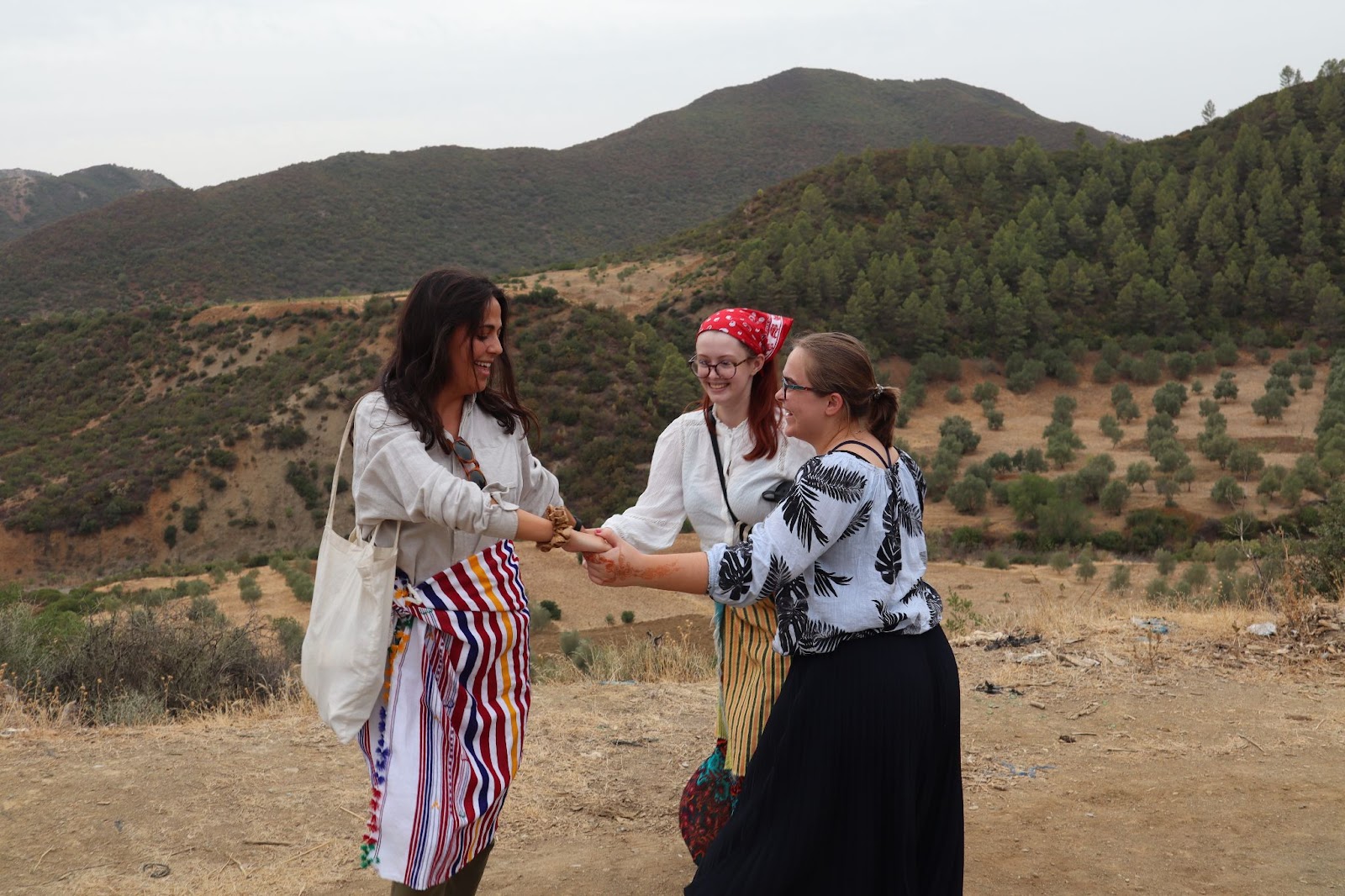
Dancing in the hills of Morocco, wearing folk skirts we bought from a woman who hosted us for lunch in a rural village. From left to right: Alba (one of our academic advisors in Granada), Frances (fellow Bryn Mawr student), Sarah (fellow study abroad student).
Studying abroad looks different for everyone. I have been lucky to travel a lot throughout my life, so going abroad didn’t feel entirely new at the time. I was actually worried that, having traveled so much before, I wouldn’t get as much out of it. But the experience of visiting somewhere for two weeks and living there for several months is so different, and living a new lifestyle in a new place helped me put my time both traveling the world and living in America into a broader context. I find it easier to be grateful for the things I have and the diversity I have experienced. These things take work; I could have easily gone to Spain, seen some cool things, and come away unchanged other than my camera roll. But I put in the work, and my experience met me halfway, and I am forever grateful.
Hasta luego, AJ Rose

